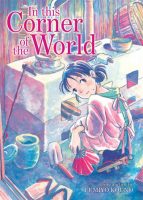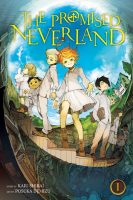My News and Reviews
Last week I posted the Bookshelf Overload for November, which also happens to be the final Bookshelf Overload feature here at Experiments in Manga since I will be entering semi-retirement as a manga blogger very soon. Otherwise, it was a fairly quiet week, as has been the case for quite some time now. I’ve been very busy at work trying to get a bunch of stuff done before the end of the year, so I haven’t even been paying much attention to what’s going on online. However, last week I discovered (or perhaps re-discovered?) that The Beast Player by Nahoko Uehashi will be published in English next year! Uehashi is the creator of Moribito, which I adore along with its anime adaptation. (Moribito would have made a great topic for an Adaptation Adventures feature.) Sadly, only the first two novels in the Moribito series were ever released in English–Guardian of the Spirit and Guardian of the Darkness–but I’m very happy to see more of her work in translation.
Quick Takes
 In This Corner of the World by Fumiyo Kouno. Both of the manga by Kouno that have been released in print in English–Town of Evening Calm, Country of Cherry Blossoms and now In This Corner of the World–use the atomic bombing of Hiroshima during World War II as a major touchstone. However, while the event is certainly important to In This Corner of the World, it’s not the central focus of the series. In This Corner of the World largely follows the everyday life of Suzu, a young woman from a small fishing village in Hiroshima who has recently married and moved in with her husband’s family in the nearby city of Kure. The three-volume series, collected into a single omnibus for its English-language release, isn’t a manga with a driving plot. Instead, the chapters read like a compilation of closely-related remembrances. The theme of memories is one that is echoed throughout the entire manga. Although the subject matter of In This Corner of the World is certainly serious, with an authentic portrayal of some of the tragedies and heartbreak associated with war, Kouno has also created a quiet and lovely work with significant charm.
In This Corner of the World by Fumiyo Kouno. Both of the manga by Kouno that have been released in print in English–Town of Evening Calm, Country of Cherry Blossoms and now In This Corner of the World–use the atomic bombing of Hiroshima during World War II as a major touchstone. However, while the event is certainly important to In This Corner of the World, it’s not the central focus of the series. In This Corner of the World largely follows the everyday life of Suzu, a young woman from a small fishing village in Hiroshima who has recently married and moved in with her husband’s family in the nearby city of Kure. The three-volume series, collected into a single omnibus for its English-language release, isn’t a manga with a driving plot. Instead, the chapters read like a compilation of closely-related remembrances. The theme of memories is one that is echoed throughout the entire manga. Although the subject matter of In This Corner of the World is certainly serious, with an authentic portrayal of some of the tragedies and heartbreak associated with war, Kouno has also created a quiet and lovely work with significant charm.
 The Promised Neverland, Volume 1 written by Kaiu Shirai and illustrated by Posuka Demizu. The beginning of The Promised Neverland is very bright, but it doesn’t take much time at all for the series to execute an exceptionally dark turn. Emma and the other orphans at Grace Field House lead happy lives. They are surprisingly well-cared-for, provided with delicious food and an idyllic environment in which to grow into young, healthy children. But when Emma discovers the horrifying truth behind the orphanage’s purpose, she becomes determined to find a way for all of the children to escape. However, running away will be an extremely difficult task to accomplish, especially when plans must be devised and executed in complete secrecy. The Promised Neverland features an intense battle of wits as Emma and the others are suddenly faced with securing their own survival in an unforgiving world that is unlike anything that they were previously led to believe. The story is deeply unsettling, and Demizu’s artwork is more than up to the task of creating a chilling atmosphere. I am incredibly interested to see how The Promised Neverland continues to develop from here.
The Promised Neverland, Volume 1 written by Kaiu Shirai and illustrated by Posuka Demizu. The beginning of The Promised Neverland is very bright, but it doesn’t take much time at all for the series to execute an exceptionally dark turn. Emma and the other orphans at Grace Field House lead happy lives. They are surprisingly well-cared-for, provided with delicious food and an idyllic environment in which to grow into young, healthy children. But when Emma discovers the horrifying truth behind the orphanage’s purpose, she becomes determined to find a way for all of the children to escape. However, running away will be an extremely difficult task to accomplish, especially when plans must be devised and executed in complete secrecy. The Promised Neverland features an intense battle of wits as Emma and the others are suddenly faced with securing their own survival in an unforgiving world that is unlike anything that they were previously led to believe. The story is deeply unsettling, and Demizu’s artwork is more than up to the task of creating a chilling atmosphere. I am incredibly interested to see how The Promised Neverland continues to develop from here.




